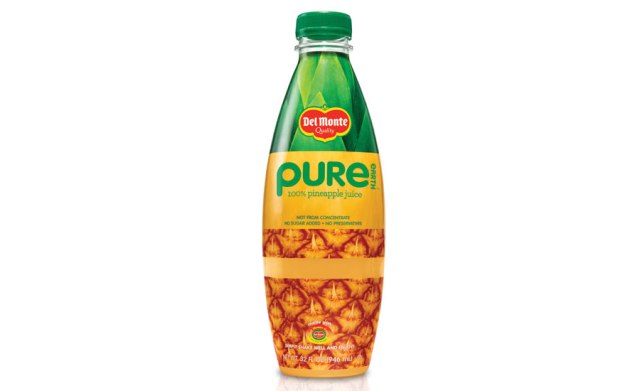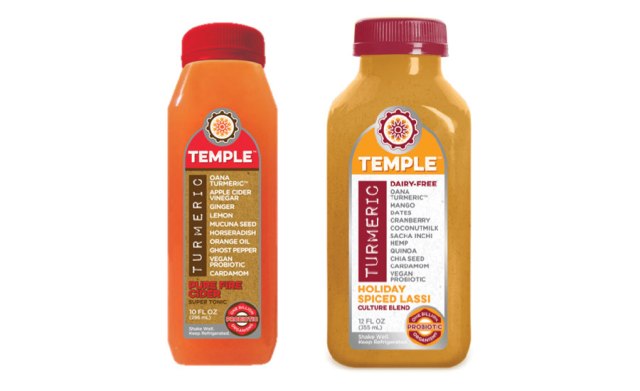Natural, organic retailers face competition from mainstream channels |
| Author:sunstarmachine.com Date:11/9/2015 11:53:36 PM |
Natural, organic retailers face competition from mainstream channelsMore consumers purchasing natural, organic products
Organic food and beverages represent the larger segment — 63 percent share of total retail dollar sales — of the natural/organic foods and beverages market, notes Packaged Facts. Yet, because no federally regulated definition of natural exists, the natural foods and beverages segment lost 3.6 share points in the past five years, dropping from a 40 percent share in 2006 to 36.4 percent in 2014, it adds. Yet, based on growing sales and consumer demand, experts predict a bright future for natural and organic beverages, along with the retailers that carry these products. Packaged Facts' market research projects that the retail market for natural and organic foods and beverages will grow 62.1 percent between 2014 and 2019, with total annual sales advancing from $53.5 billion in 2014 to $86.7 billion in 2019, for a compound annual growth rate (CAGR) of 10.1 percent. "We are in the midst of a renaissance. Consumers are driven to natural and organic retailers, searching for everything from locally sourced, grass-fed milk to naturally sweetened, no-calorie beverages," says Jake Knepper, natural and specialty product expert at Schaumburg, Ill.-based SPINS. "Farmers markets are more popular than ever, … and our favorite restaurants — even chain restaurants — are sourcing local meats and vegetables." Experts say this translates to more people purchasing healthy, organic products. "Today, over eight in 10 parents (83 percent) say they've purchased organic products, a significant increase from the 73 percent of parents who purchased these products six years ago," according to the Washington, D.C-based Organic Trade Association's (OTA) U.S. Families' Organic Attitudes and Beliefs 2015 Tracking Study. Additionally, among families who buy organic products, 61 percent report they are buying more organic foods in general than they were a year ago, notes the OTA. Seventy-eight percent of parents shop in traditional food stores for their organic products, while 37 percent choose to buy organic foods from a natural/organic food chain, it adds. The Packaged Facts' report shows similar data with mass-market retail outlets, including conventional supermarkets, drugstores and mass merchandisers, including Walmart, accounting for 49 percent of dollar sales of natural and organic foods and beverages in 2014. "The natural foods channel — comprising Whole Foods Market, Trader Joe's, as well as smaller regional natural food chains such as Sprouts Farmers Market and independent natural food stores — will follow with a 41 percent share," notes the report. A larger slice of a bigger pie At 38.7 percent, national natural grocery chains (Whole Foods Market, The Fresh Market and Trader Joe's) and regional natural/health food stores captured the largest slice of the organic pie, followed closely by mass-market grocery stores, which generated 34.4 percent of sales. Club/warehouse stores, including Costco and Sam's Club, captured 9.5 percent of organic food and beverage sales, notes the OTA. "The mainstreaming of organic means that mass-market grocery stores are increasingly offering a wider variety of organic products, with beverages comprising the No. 4 largest category," says the OTA's Senior Writer/Editor Barbara Haumann. "Soymilk is the beverage leader, but is facing competition from other milk alternatives, such as almond milk." While soymilk, the leader of organic beverage sales with $1 billion in sales, experienced a 10.5 percent decline versus 2013, organic fresh juice sales surged to $645 million, a 32.8 percent increase compared with 2013, the OTA notes. The OTA also reports double-digit growth in other sub-categories, including canned and bottled juices and drinks, up 14.8 percent to $945 million, and tea, up 16.9 percent to $514 million. SPINS' Knepper notes that natural and organic retailers have become an incubator for new and innovative beverages. "This channel is where we saw the introduction of almond milk, coconut water, ready-to-drink (RTD) cold-brew coffee, kombucha and [high-pressure processed] (HPP) juices," he says. "We're seeing a huge amount of innovation and creativity within the beverage segment. Maple water, on the heels of coconut water, has become immensely popular with natural consumers while functional coffee, matcha and nut milk continue to push the envelope. "We're also seeing major growth within the ready-to-drink coffee category," he continues. "It's all about cold-brew coffee right now." Creative and nostalgic packaging, like milk-style cartons and nitrogen-infused cans, are helping to market cold-brew coffee, which is gaining ground because of consumers' perceptions of it as a "premium, better tasting coffee," Knepper says. Coffee, coffee substitutes, cocoa and RTD tea and coffee generated sales growth of $50.7 million and $44.5 million, respectively, in natural supermarkets, excluding Whole Foods Market, in the 52 weeks ending Aug. 9, according to SPINSscan Natural, the sales database of SPINS. Although most segments in the natural and organic category have established themselves within the channel, shelf-stable juices and carbonated soft drinks (CSDs) are looking to re-establish themselves, Knepper says. "Plant waters, such as maple water and cactus water, are showing great promise within shelf-stable juices, but the core products are likely struggling with a lack of perceived freshness — a trend that is giving their refrigerated counterpart the advantage growth wise," he says. "Soda, which has a perceived negative health connotation, and products designed to compete within that space (both full and low/no-calorie offerings) are seeing less growth overall compared to similar offerings within the flavored sparkling water category," Knepper adds. Functional growth Coral Gables, Fla.-based Del Monte Fresh Produce recently released Del Monte Pure Earth Juice, a 100 percent not-from-concentrate, refrigerated juice available in four flavors: Pineapple, Pineapple Lime, Pineapple Banana Coconut and Pineapple Blueberry. "We're seeing great growth within functional juices and kombucha categories," Knepper says. "Products from HPP juice stalwarts have skyrocketed, surpassing everyone's expectations considering it was thought of as niche market with limited potential. "It's rather amazing how a food preservation innovation like high-pressure processing had the ability to completely shake up and revive a juice segment that was growing stagnant," he continues. "The smaller, more innovative brands following in their wake continue to impress and show tons of promise." Knepper explains that HPP treats foods and juices in a nonthermal pasteurization process to reduce harmful bacteria. Approved by the Food and Drug Administration (FDA), HPP increasingly is being used by beverage manufacturers. For example, Pure Fire Cider and Holiday Spiced Lassi from New York-based Temple Turmeric, are HPP, BPA-free and Non-GMO Project Verified. According to the Packaged Facts report, the beverage segment of the natural and organic food and beverage category represents 15 percent of total sales. Organic motivation Whole Foods Market, a $12.9 billion company, is a leader in better-for-you products and sustainable living, followed closely by Trader Joe's, which reached sales of $11.3 billion, according to a Packaged Facts' February 2014 report titled "Whole Foods and the Natural Food Channel." Yet, other retailers are jumping on the organic bandwagon and by offering private-label or exclusive lines. For example, both Walmart and Target announced last April that they would be increasing their presence in the organic/natural foods space. Walmart now carries an exclusive Wild Oat line of organic and natural food items as a lower-priced alternative to other natural/organic brands — including the 1,600 natural/organic foods and beverages it already stocks, notes the Packaged Facts report. In April 2014, Target announced its "Made to Matter — Handpicked by Target" collection, which features 17 natural, sustainable or organic brands with 120 new Target-exclusive products including baby, beauty, household and grocery offerings, the report adds. As buying organic products becomes even more mainstream, OTA's Haumann predicts there will be an increase in the diversity of organic-buying families. "As more retailers begin offering these products, consumers will have more choices about where to purchase products, which could drive costs down. It's a win-win for everyone." |

Copyright (c) 2023 Zhangjiagang Sunstar Machinery Co., LTD. All Rights Reserved
Chinese professional manufacturer of beverage filling and packing machine
beverage machine, beverage packaging machinery, beverage filling and packing machine, water filling machine, bottle filling machine, juice tea filling machine, beer filling machine, pop can filling and packing machine, oil filler







